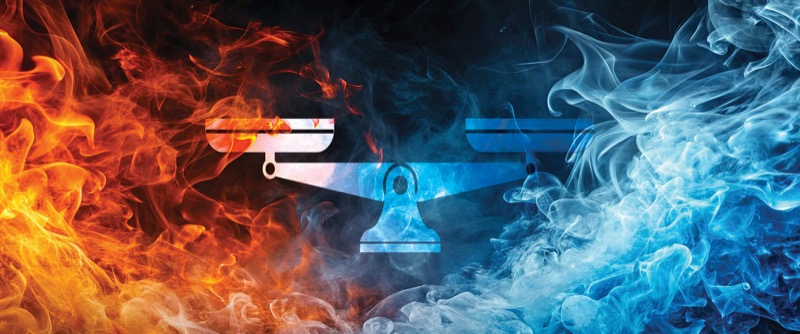SAN DIEGO—For resection of large polyps, cold endoscopic mucosal resection is known to be safer than hot EMR but carries a higher risk (=25%) for recurrence at first surveillance colonoscopy. The risk for recurrence at the second surveillance exam and efficacy of resecting these lesions has not been established and was the aim of a multicenter study by the Large Polyp Group.
In an extension of a primary analysis reported at DDW last year (abstract Sp1251), the investigators conducted a follow-up analysis of 660 patients treated at 15 centers for nonpedunculated colorectal polyps measuring at least 20 mm. The key finding in the 2024 report was a significantly higher rate of recurrence at six months in the cold snare group: 28% versus 14% in the intention-to-treat analysis (P<0.001) and 29% versus 12%, respectively, in the per-protocol analysis (P<0.001).
In the new analysis presented at DDW 2025 by Heiko Pohl, MD, of Dartmouth Hitchcock Medical Center, in Lebanon, N.H., and the VA Medical Center, in White River Junction, N.H., the investigators found that recurrence rates at the second surveillance exam (SC2) were not significantly different between cold and hot EMR, and regardless of the initial treatment, these recurrences could be adequately managed (abstract Sa1691).
The investigators performed an interim analysis of all patients who completed the SC2. The primary end point was recurrence/residual rate of neoplastic polyps at the SC2, and secondary outcomes included proportion of polyps with no recurrence at initial surveillance but recurrence at the SC2. Treatment of recurrence was at the discretion of the endoscopist.
The SC2 was completed by 148 patients (48%) in the cold EMR group and 124 (41%) in the hot EMR group. Among these patients, recurrences were significantly more common at initial surveillance after cold EMR (36.3%) than hot EMR (16.9%; P<0.001). On the other hand, at the SC2, recurrences were not significantly different for cold EMR (12.7%) and hot EMR (8.9%; P=0.304) in the intention-to-treat analysis or in the per-protocol analysis (12.8% vs. 5.4%, respectively; P=0.08).
A ‘Surprising’ Finding
Among patients with recurrence at initial surveillance, complete removal of the lesion with no recurrence at the SC2 was more often achieved in the cold EMR group (80.7%) than in the hot EMR group (57.1%; P=0.035). The proportion of polyps with no recurrence at initial surveillance but a recurrence detected at the SC2 was 5.7% with cold snare and 1.6% with hot snare (P=0.127).
“It’s concerning that almost half of those who had a recurrence at the second surveillance after cold EMR had not been found to have a recurrence at first surveillance. … We missed those,” Dr. Pohl said. He commented that this “surprisingly high” new SC2 recurrence rate after a supposedly “normal” initial surveillance finding after cold EMR suggests initial surveillance biopsies “should be taken, even in the absence of any visible recurrence.”
The median polyp size for recurrences was similar for both approaches, around 9 mm, and all recurrent lesions could be removed. Histology of recurrent polyps also was similar, and none of the lesions were cancerous.
The investigators concluded that the long-term efficacy of cold EMR of large nonpedunculated polyps appears comparable to that of hot EMR at the SC2, although incomplete SC2 follow-up data may limit the interpretation of the findings. Management of recurrence seems equally effective for cold and hot EMR.
Fadi Antaki, MD, the chief of the gastroenterology section at the John D. Dingell VA Medical Center, and an associate professor of medicine at Wayne State University, both in Detroit, commented on the findings. “With its significantly lower rate of complications, cold EMR is an attractive option for the resection of many non-pedunculated colon polyps, especially those at an increased risk of bleeding, such as [in] the proximal location or in patients needing anticoagulation. The higher rate of polyp recurrence is the Achilles’ heel of this technique. This study shows that with appropriate treatment, the rate of recurrence eventually falls back into the same range as hot EMR, and recurrence tends to be relatively small and amenable to endoscopic therapy.
“But delayed recurrence, despite a negative initial surveillance exam, is concerning, and more data are needed to understand the risk factors,” Dr. Antaki added. “Meanwhile, it is prudent to biopsy the scar at initial surveillance even if there is no obvious recurrence at that time.”
—Caroline Helwick
The views expressed here represent those of Drs. Antaki and Pohl and do not represent the official position of the Department of Veterans Affairs or the United States government. Dr. Antaki is a member of the Large Polyp Study group but was not involved in this trial. He reported no relevant financial disclosures. Dr. Pohl reported financial relationships with Olympus and Pentax.
This article is from the June 2025 print issue.





